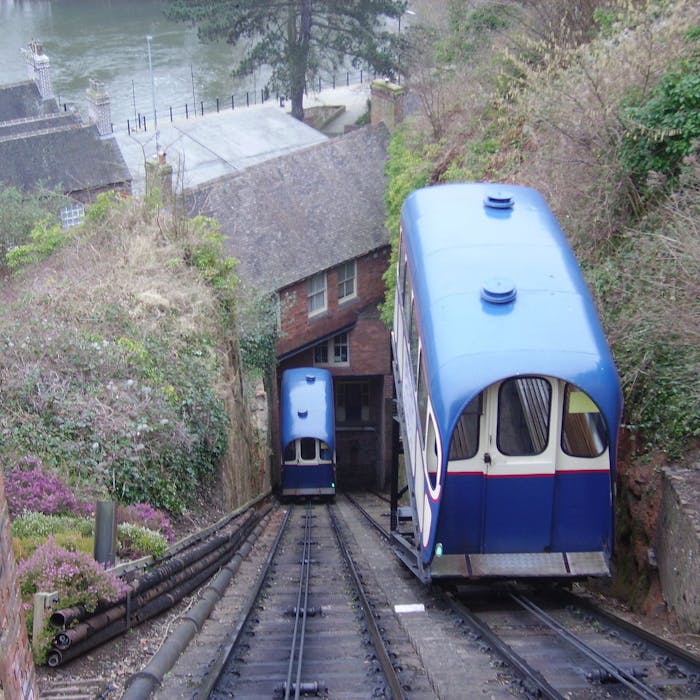
Bridgnorth Cliff Railway - linking the top and bottom of a town
For over a century Bridgnorth Cliff Railway has been transporting the people of the Shropshire town up and down the 111 ft sandstone cliffs that separate the High Town from the Low Town, on the River Severn.
Most 'funicular' passenger cliff railways were built at seaside resorts, and the first appeared in Britain at Scarborough in 1875. The zenith of cliff railway construction was in the 1890s and 1900s. The pre-eminent of the cliff railway engineers during this period was George Croydon Marks.
In 1890 a public meeting was called to discuss a new means of communication between the High Town and Low Town of Bridgnorth, avoiding the need to scale the 200 or so steps. The meeting was reported in the local press, and the matter came to the attention of George Marks, who then became involved in the planning of a funicular railway to solve the problem.
Construction work began on 2nd November 1891, and was much hindered by the discovery of caves set into the cliff-face. One was so large it was necessary to support the roof to avoid slippage and subsidence. Another problem was that there were many houses built into the cliff face around the site – in some cases, the effect of excavating the cutting was to remove supporting walls from the poorly constructed dwellings.
The railway opened on 7th July 1892. Between July and September 1892 over 50,000 passengers used the railway.
The railway operates two cars on parallel tracks. Connected by steel ropes, the carriages serve to counterbalance each other – as one rises to the top station, the other runs down to the bottom. The cars are now powered by an electric winding engine, but were originally driven by a system of water balance, each carriage carrying water ballast in a tank beneath the passenger compartment.
The railway continues to run daily, only closing on Christmas Day, Boxing Day and New Year's Day.
Further reading
Links to external websites are not maintained by Bite Sized Britain. They are provided to give users access to additional information. Bite Sized Britain is not responsible for the content of these external websites.
